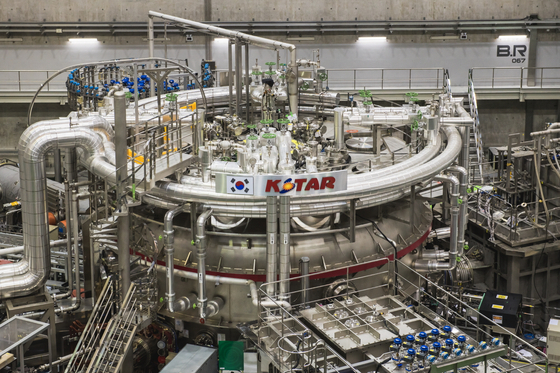South Korean government has initiated the design phase for a nuclear fusion power proven type reactor, taking a significant step toward harnessing nuclear fusion for electricity generation.
The facility, intended for demonstration purposes, is expected to achieve an output level suitable for commercial operation.
The Ministry of Science and ICT said on Wednesday that a design preparation task force comprising industry and academia experts will be responsible for designing the 500-megawatt facility.
The preliminary conceptual design is scheduled for completion in 2026 as the first phase, followed by the establishment of design standards in the second phase by 2030. The engineering design and licensing process is projected to be concluded by 2035.
Nuclear fusion, which mimics the principle of the sun's energy production, involves the fusion of light atomic nuclei into heavier ones, generating substantial heat that can be utilized as an energy source. Unlike nuclear fission, this process eliminates concerns about radioactive emissions. With its potential to revolutionize energy sources, nuclear fusion is widely regarded as a game-changer.
The Korea Institute of Fusion Energy (KFE) has been actively researching nuclear fusion since the installation of the Korea Superconducting Tokamak Advanced Research (KSTAR) at the Daedeok Research Complex in Daejeon, Augist 2007. Their efforts have been focused on achieving and sustaining plasma temperatures above 100 million degrees Celsius, a crucial prerequisite for successful nuclear fusion.
Recent progress has seen plasma temperatures exceed 100 million degrees Celsius and remain stable for a duration of 30 seconds. The ultimate objective is to progressively extend this duration, targeting a milestone of more than 300 seconds by 2026.
Going beyond the capabilities of KSTAR, the upcoming demonstration facility will also encompass the development of devices such as steam generators and turbine generators, enabling electricity generation in conjunction with the fusion device.
The Ministry of Science and ICT anticipates the participation of approximately 20 companies, including those involved in the construction of KSTAR, in the design preparation team.
Write to Jin-Won Kim at
jin1@hankyung.com








